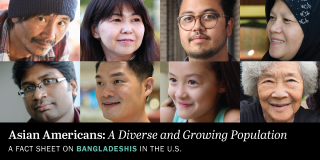
Counting Race: How the Census Measures Identity and What Americans Think About It
How the U.S. government measures race has changed substantially since censuses began in 1790. Today, Americans differ on whether the government should ask about race.
Numbers, Facts and Trends Shaping Your World
How the U.S. government measures race has changed substantially since censuses began in 1790. Today, Americans differ on whether the government should ask about race.
In this interactive feature, explore how changes between the 2020 and 2024 elections in how – and whether – people voted helped to return President Trump to office.
Pew Research Center’s News Media Tracker shows data on Americans’ awareness of, use of and trust in 30 major news sources to map out part of the U.S. media ecosystem.
Find how many people identify with each religious group and what percent each made up in 201 countries and territories, and by region, in 2010 and 2020.
The Religious Landscape Study is a comprehensive survey of more than 35,000 Americans’ religious identities, beliefs and practices that’s been conducted in 2007, 2014 and 2023-24. Pew Research Center.
Many public K-12 teachers say people should know that teaching is hard job, and that teachers care about students and deserve respect.
As a shop that studies human behavior through surveys and other social scientific techniques, we have a good line of sight into the contradictory nature of human preferences. Here’s a look at how we categorize our survey participants in ways that enhance our understanding of how people think and behave.
To offer a taste of the variety of topics the top-ranked podcasts represent, and to give a sense of what podcast listeners experience, we compiled clips from the shows we studied.
Read about some of the ways focus group participants with ties to different faith traditions explain the complex relationship of religion and culture in their lives.
Notifications
